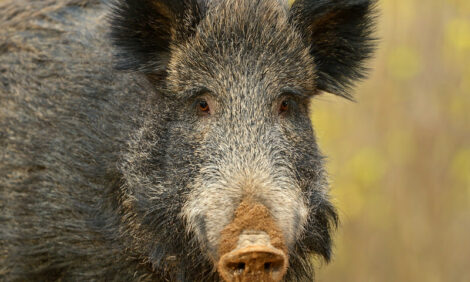



CME: USDA <em>Cold Storage</em> Report
US - Late last week, USDA released its monthly Cold Storage report for November, write Steve Meyer and Len Steiner.Amid all of the holiday hubbub and our last-minute
(meaning 'normal' for us males) Christmas shopping last
week, we overlooked the release on 22 December of USDA's
monthly Cold Storage report.
The report showed the predictable
November decline in total meat and poultry inventories as turkeys
and hams moved to consumers for Thanksgiving celebrations.
But it also showed a continuation of the recent buildups of
chicken and beef inventories – the former being of significant
concern at the moment. Data for month-end inventories by species
appear in the chart below. Data for all species appear in the
table on page 2 of the CME report (see link below).

Some highlights of the December report are:
Total meat and poultry inventories as of 30 November amounted to 1.879 billion pounds, 1.8 per cent higher than one year
ago but 9.1 per cent lower than on 31 October. This puts November
cold storage stocks among the lowest of this decade. In addition,
note that this year's seasonal reduction of meat and
poultry stocks started at one of the lowest levels on record.
There is not a lot of meat protein in storage to backstop
current production as we enter 2011.
As expected, reductions in whole turkey inventories led the
way in both unit and percentage terms. That is quite normal for November. What is more important, however, about this seasonal
drawdown is the level of turkey stocks at month's end – only 175.8 million pounds. That is the lowest month-end stock of turkey
since March 1986. Lower production put turkey margins firmly in the black in 2010 and the sector could well remain profitable in 2011
even with sharply higher feed costs. At the least, we see little chance of significant output growth, meaning that these stock levels,
though increasing seasonally, will remain low relative to those of 2008 and 2009.
Pork stocks were down 2.8 per cent from last year and 2.5 per cent from last month and remain in the lower part of their historical range – even as
slaughter and production surged during Q4. As expected, hams were the big driver of the month-to-month reduction with November
30 stocks nearly 35 per cent lower than those of October 31. That reduction is also quite common given the popularity of ham for Thanksgiving
and for Christmas gifts. Ham inventories, though, were still 21 per cent larger than last year. Stocks of all other pork cuts except picnics,
other pork and variety meats increased during November. But stocks of most of those cuts remained smaller than year-ago levels.
Chicken inventories are once again becoming worrisome. Total chicken in freezers on 30 November amounted to 767.4 million
pounds, 16.4 per cent more than one year ago and their highest level since November 2008. The 30 November stocks were also 4.5 per cent larger
than one month earlier. Most concerning is the continued buildup of leg quarter items. Stocks of leg quarters are up 80 per cent from last
year and 10 per cent from last month while leg stocks are nearly five times that of last year and 19 per cent higher than in October. There were 218 million
pounds of leg quarters, legs, thighs and thigh quarters and thigh meat in freezers on 30 November – 80 per cent more than last year and
10 per cent more than last month. If Russia carries through with its 'no frozen chicken' threat, a good portion of these stocks will have to find
a home somewhere else and than could put some pressure on pork trimmings and grinding beef as more chicken finds its way into
processed meat product formulations. Stocks of 'other' chicken, which usually comprise 40 to 50 per cent of total chicken in freezers, were
2.3 per cent higher than last year and 3.5 per cent higher than last month. We believe that most of this product is comprised of processed chicken
products such as nuggets, tenders, etc.
Beef stocks were 2.3 per cent higher than last year and 6.3 per cent higher than last month with boneless beef stocks growing by over seven per cent during
the month. While growing, beef stocks are still well within their normal historical range.
Please see page 3 of this edition for an announcement from CME Group regarding Lean Hogs Options (link below).
Further Reading
| - | You can view the full report by clicking here. |








